1. Self-Driving Tractors and Harvesters
AI enables tractors, combines, and other farm machinery to operate autonomously with minimal human input. Using GPS guidance, computer vision, and an array of sensors, these machines can navigate fields and perform tasks like plowing, planting, and harvesting on their own. This autonomy improves efficiency by allowing 24/7 operation and perfectly straight, non-overlapping passes, which reduces fuel and time wastage. It also helps alleviate labor shortages and reduces human workload in agriculture, as one operator can supervise multiple autonomous machines remotely. Importantly, safety is enhanced – for example, removing human drivers helps avoid tractor rollovers, which are a leading cause of farm fatalities (a major safety benefit highlighted by experts). Overall, self-driving farm equipment powered by AI is ushering in a new era of precision and reliability in field operations.

Autonomous guidance technology is rapidly being adopted in farming. By 2019, over half of U.S. row-crop acreage (including corn, soybean, wheat, and cotton fields) was already being managed with auto-steer and GPS guidance systems. These systems are a precursor to full autonomy – they keep farm machinery on an optimal path and prevent overlap, increasing field efficiency. Now, fully AI-driven tractors are emerging: for instance, one electric autonomous tractor can use computer vision to allow a single person to oversee a fleet of up to eight tractors at once. Such innovations are significantly reducing labor needs and have been described as “a new era of efficiency and safety” on farms. Farmers are beginning to trust these self-driving machines to handle routine fieldwork, and as a result they report lower labor costs and more timely operations, like harvesting exactly when crops are ready.
2. Precision Farming
AI is at the heart of modern precision agriculture, which tailors farming inputs to the exact needs of each location and crop. By analyzing data from satellite imagery, drone surveys, and on-field sensors, AI systems determine the optimal amount of water, fertilizer, or pesticide required for each small plot (sometimes down to the individual plant). This fine-grained management means farmers can avoid the blanket one-size-fits-all approach and instead apply inputs only where needed and in the right dose. The result is higher efficiency – crops get sufficient nutrients and care, but with far less waste. Studies have noted that AI-driven precision techniques allow farmers to achieve the same (or higher) yields with fewer inputs by eliminating over-application and overlaps. In addition to boosting productivity, this approach reduces agriculture’s environmental footprint: precise application minimizes fertilizer runoff into waterways and decreases excess chemical use, making farming more sustainable.
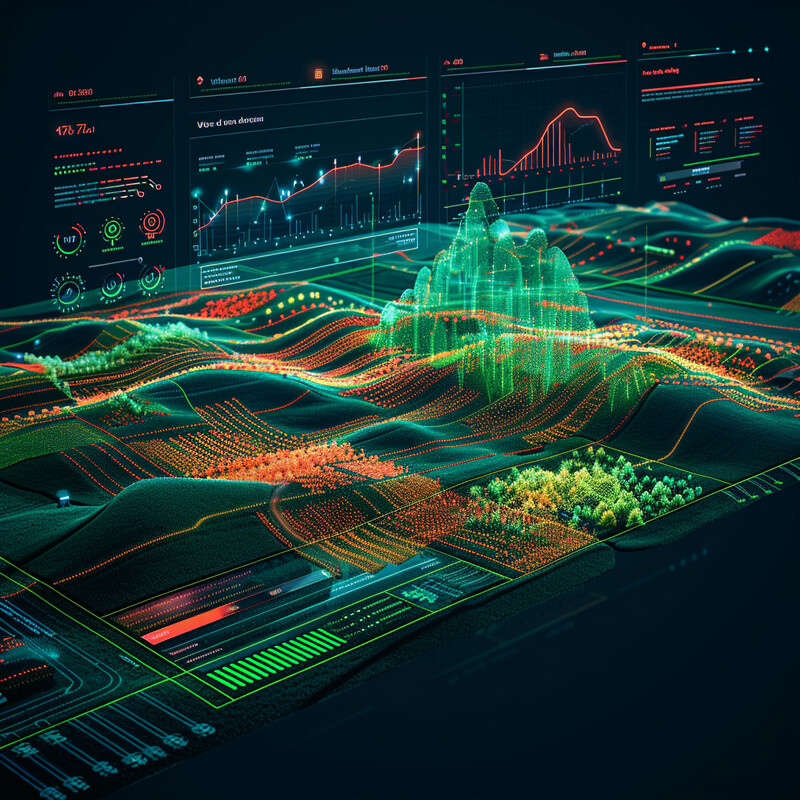
Evidence from farm studies underscores how much precision farming can save. A multi-year analysis by agricultural equipment and crop organizations in the U.S. found that using precision technologies has already increased crop productivity by an estimated 4% while reducing herbicide (weed-killer) use by about 9%. These gains come from practices like GPS-guided auto-steering, section control on sprayers, and variable-rate application of inputs guided by AI. Moreover, the same study projected that with full adoption of advanced precision AI tools, yields could increase an additional 6% and herbicide use could drop another 15% (on top of current savings). Similar efficiency improvements were seen for fertilizer and fuel use as well. In short, AI-powered precision farming is enabling growers to “use less to grow more,” delivering more output per unit of input and cutting costs while maintaining high yields.
3. Crop Health Monitoring
AI-driven systems are revolutionizing how farmers monitor crop health across vast acres. Traditionally, growers had to scout fields on foot to spot problems like pest infestations or disease – a labor-intensive and often delayed process. Now, intelligent drones and sensor networks continuously survey crops from the air and ground, capturing high-resolution images and multispectral data. AI algorithms analyze these streams in real-time to detect subtle signs of stress, disease, or nutrient deficiencies – such as color changes in leaves or unusual growth patterns – that might be invisible to the naked eye from a distance. By catching early indicators of trouble, AI crop monitoring gives farmers timely alerts to intervene before a minor issue turns into a major outbreak. This targeted surveillance means treatments (like spraying for a fungus) can be done exactly where needed, rather than treating the whole field blindly. In essence, AI acts as a constant “eye” on crop fields, diagnosing health issues plant-by-plant and enabling precision remedies that save crops and reduce unnecessary chemical use.
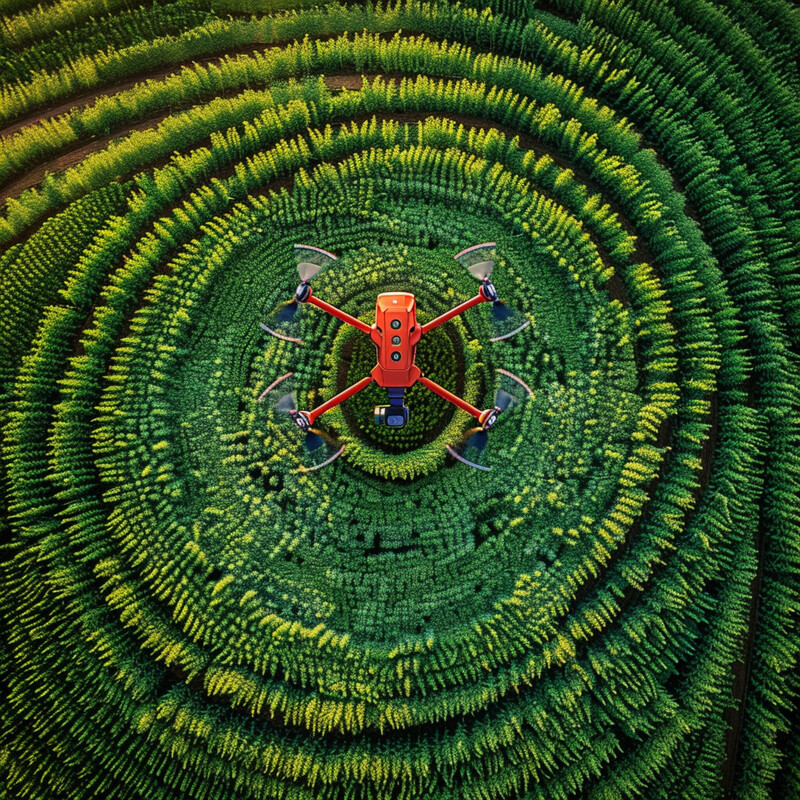
The accuracy and speed of AI in detecting crop problems are remarkably high. For example, a 2025 scientific study developed a deep learning model to identify diseases in cotton plants with over 98% accuracy in classifying healthy vs. infected leaves. This level of precision, demonstrated in controlled experiments, means an AI can correctly recognize virtually all instances of a particular crop disease from imagery, vastly outperforming the average human scout. In practical terms, such AI-powered early detection can greatly reduce crop losses – researchers note that plant diseases cause substantial agricultural losses worldwide, so catching them early is essential to minimize economic damage. Real-world deployments echo these findings: farmers using drone-based AI monitoring report that they can respond to pest or disease incursions days or weeks sooner than before, often preventing an outbreak from spreading. Overall, the use of AI for crop health monitoring translates into healthier plants and higher yields, because issues are addressed at inception rather than after significant damage is done.
4. Weed Identification and Removal
Weeds compete with crops for nutrients, water, and sunlight, and traditional weed control often relies on spraying entire fields with herbicides. AI offers a smarter solution by distinguishing weeds from crops in real-time and enabling targeted removal. Using image recognition cameras mounted on sprayers or weeding robots, AI systems can scan the ground as equipment passes over and instantly identify individual weeds among the crop plants. Once a weed is identified, the system can either direct a precise squirt of herbicide exactly onto that weed or activate a mechanical weeding tool to uproot it – all without harming the surrounding crop. This selective approach means farmers don’t have to blanket-spray an entire field (much of which may not even have weeds). By treating only the weeds, herbicide usage drops dramatically and crops are better protected from chemical exposure. Farmers benefit from lower chemical costs and crops benefit from less competition, leading to better yields. AI-driven weed removal also works day or night and can tackle weeds when they are small, preventing them from going to seed. Overall, this technology keeps fields cleaner with a fraction of the chemicals previously needed, addressing both economic and environmental concerns.
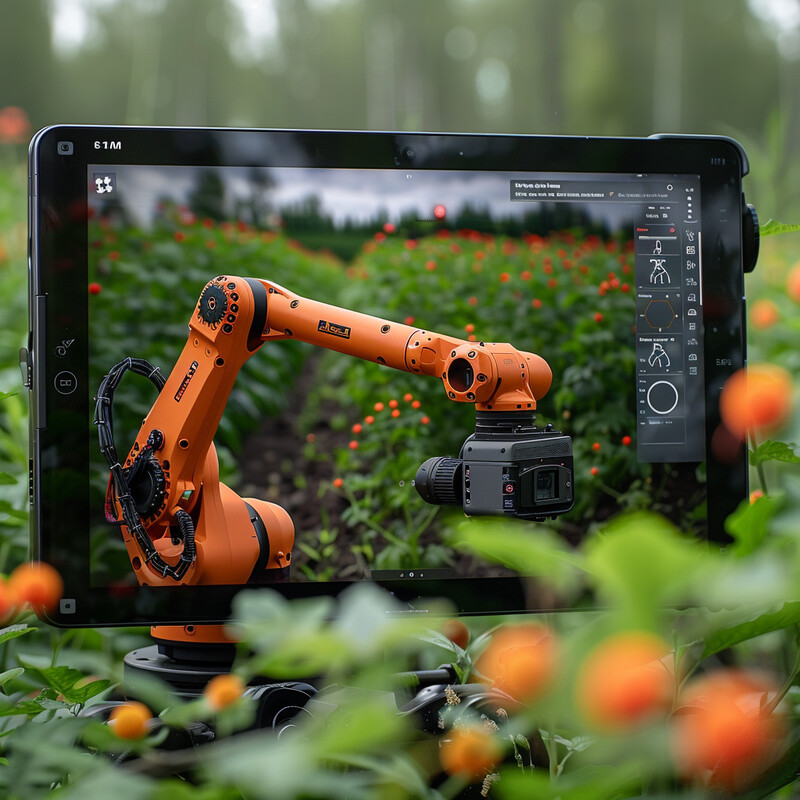
In practice, AI-based weed control has proven to cut herbicide use by enormous margins. For example, farmers in Canada testing an AI-equipped spot-spraying system (the Weed-It Quadro) reported using 80–86% less herbicide compared to normal blanket spraying. In one case, only 14% of the usual volume of herbicide was needed to achieve the same weed control results, because the AI sprayer only targeted actual weed patches instead of uniformly spraying the whole field. Similarly, agricultural researchers found spot-treatment saved about 80% of spray volume with equivalent weed control efficacy in field trials. These savings are tremendous – besides the cost reduction for the farmer, this means a lot fewer chemicals entering the soil and water. Such systems, often guided by AI cameras that differentiate green weeds on bare soil, have already become commercially available. Growers using them are effectively “laser focusing” their weed treatments, confirming that AI-driven weed identification can maintain crop yields with a small fraction of the herbicides formerly required.
5. Soil Health Analysis
AI is improving how farmers assess and manage soil health, which is fundamental to productive farming. Instead of relying on infrequent soil tests and intuition, farmers can now deploy networks of soil sensors (measuring moisture, pH, nutrient levels, temperature, etc.) and let AI continuously interpret the data. AI systems aggregate readings from across a field and identify patterns or deficiencies – for instance, pinpointing zones where soil moisture is dropping too low or where nitrogen is lacking for the crop’s needs. By analyzing this data along with weather forecasts and crop growth models, AI can provide precise recommendations: which parts of a field need fertilization, where to irrigate, or whether to adjust soil pH with lime. This leads to site-specific soil management, ensuring each area of a farm has optimal conditions for crops. Maintaining proper soil moisture and nutrient balance through AI guidance not only boosts immediate crop growth but also preserves long-term soil fertility (by avoiding over-fertilization or soil nutrient depletion). Experts note that real-time monitoring of soil nitrogen and temperature is essential for efficient fertilization and for reducing pollution – tasks perfectly suited for AI. Ultimately, AI’s ability to synthesize soil data helps farmers make informed decisions that keep soils healthy and productive, which is critical for sustainable agriculture.
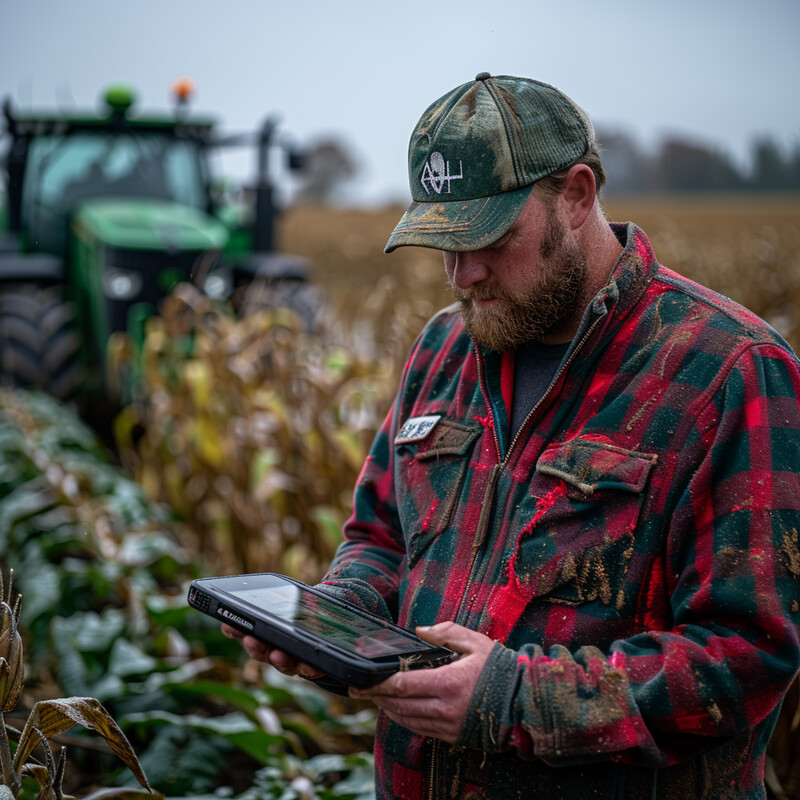
Despite the benefits, many farmers are only beginning to adopt AI-based soil and nutrient management. A recent U.S. Department of Agriculture survey reported that only 27% of farms had used any precision agriculture practices (such as sensor-guided nutrient management) as of 2023. This indicates that nearly three-quarters of farms have yet to tap into real-time soil monitoring and AI analysis on a broad scale. The low adoption is partly due to cost and awareness barriers, but it also means there is huge room for productivity gains industry-wide. On farms that do use AI and sensor-driven soil analysis, results have been promising – for example, AI recommendations on fertilizer timing and placement can significantly reduce wasted fertilizer (which often leaches away or emits greenhouse gases) while maintaining or improving yields (Cheng, 2023). Agricultural scientists emphasize that using the ideal amount of fertilizer at the right time – something AI can pinpoint – prevents both yield loss from under-fertilizing and environmental harm from over-fertilizing. As these tools become more accessible, we expect a sharp increase in farmers leveraging AI to monitor soil health continuously and optimize inputs accordingly.
6. Yield Prediction
AI is transforming crop yield prediction from an educated guess into a science. By ingesting large datasets – historical yield records, current season weather patterns, soil conditions, planting densities, and even satellite imagery of crop growth – machine learning models can forecast how much harvest to expect, often with impressive accuracy. These models continuously learn and improve as new data comes in (for instance, adjusting yield estimates if a drought hits mid-season or if satellite NDVI images show slower plant growth). The big advantage is that farmers and agribusinesses get an early and reliable heads-up on yields, sometimes months before harvest. This helps in myriad ways: farmers can plan storage and marketing (selling grain forward or locking in prices) with more confidence, and food processors and grain buyers can manage supply chains better. On a larger scale, accurate AI-driven yield predictions support food security planning by anticipating surpluses or shortages. In essence, AI takes the uncertainty out of farming by forecasting outcomes based on data rather than gut feeling. It turns what was once reactive (dealing with a poor yield after the fact) into a proactive strategy – letting stakeholders optimize their decisions in advance of the harvest.

The precision of AI yield forecasts now often exceeds that of traditional methods. A striking example comes from 2022, when an AI-powered satellite analytics system predicted U.S. crop yields with unprecedented accuracy. In a beta program, the AI’s forecast for national corn yield was off by only 0.75% and for soybean yield by just 1.01% compared to actual outcomes. This level of error – around one percent – is far smaller than typical government or industry early-season forecasts, and it demonstrates how well AI can parse complex factors (like temperature, rainfall, and crop stress signals from infrared satellite data) to estimate production. Notably, this AI yield forecasting service delivered its results weeks earlier than traditional harvest reports, giving its users a head-start in decision-making. According to the company (Hydrosat), having such early and accurate information allowed agribusiness clients to significantly reduce operational risks and increase profits through better supply chain planning. This real-world case shows that AI can reliably translate big data into crop yield predictions, which is a game-changer for farm management and the agricultural market.
7. Automated Irrigation Systems
AI is making farm irrigation far more intelligent and efficient. Traditional irrigation often runs on fixed schedules or manual control, which can lead to overwatering (wasting water and causing nutrient runoff) or underwatering (stressing plants). In contrast, AI-driven irrigation systems dynamically decide when, where, and how much to water based on real-time data. They combine inputs from soil moisture sensors, weather forecasts, evapotranspiration models, and crop growth stages to deliver the exact amount of water each crop section needs. For instance, if an AI knows rain is likely tomorrow, it might skip or reduce today’s watering to avoid oversaturation. Likewise, if one zone of a field is drier, the system can allocate extra water there rather than uniformly across the whole field. This precision ensures crops maintain optimal hydration, which can improve yields and crop quality (since water stress is minimized). The sustainability impact is huge: agriculture accounts for roughly 70% of global freshwater withdrawals, so smarter irrigation saves a scarce resource. In areas facing drought or water restrictions, AI-optimized irrigation allows farmers to “do more with less” – producing the same crop with significantly less water by eliminating waste. Additionally, automating irrigation reduces the labor of manually checking field moisture and adjusting valves, as the AI continuously manages these tasks. Overall, AI brings a level of responsiveness and conservation to irrigation that was not possible before, making farming more drought-resilient and environmentally friendly.
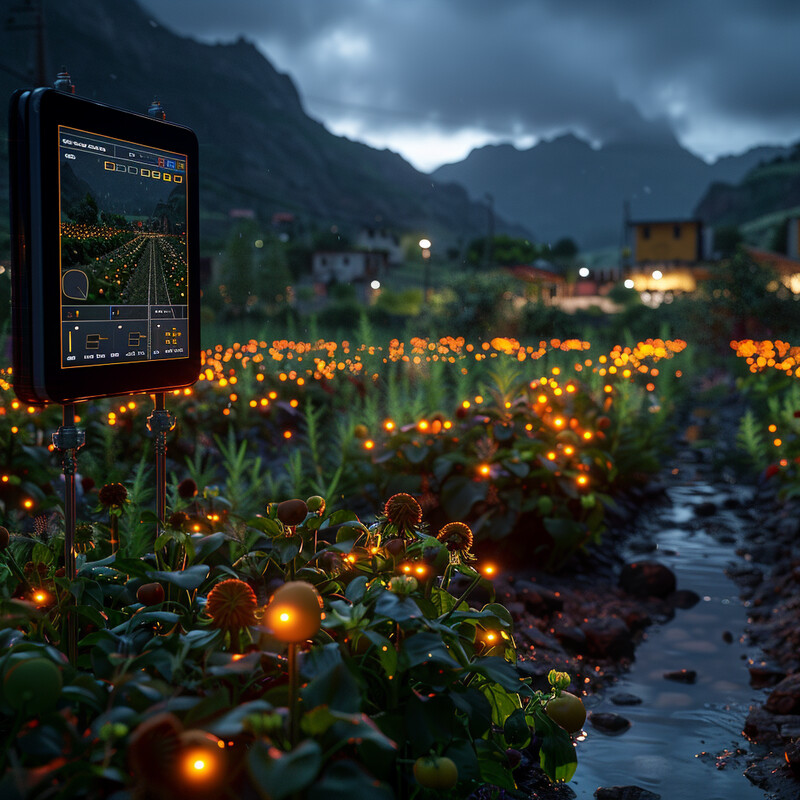
The water savings from AI-based irrigation control can be dramatic. In research settings, autonomous irrigation systems supported by AI have cut water usage by astonishing amounts. A recent case study on an AI-managed irrigation setup for a particular crop demonstrated an 87.9% average reduction in water consumption compared to traditional irrigation, without harming plant health. In one planting cycle, water use dropped by over 76%, and in a subsequent cycle it dropped by 99% – nearly eliminating conventional irrigation needs through efficient management. While that was a controlled experiment, even commercial projects report substantial gains: for example, a large-scale AI irrigation project in Australia’s Murray-Darling Basin improved on-farm irrigation efficiency by over 20%, which also boosted crop yields by around 25% in the trial areas. Farmers using AI irrigation platforms often find that their crops receive water exactly when needed and in the precise amount, translating to water savings of up to a quarter in real-world use-cases. These results mean that AI not only conserves water (critical as climate change intensifies droughts) but also can enhance crop performance by preventing under- or over-watering. In dry regions or seasons, such optimized irrigation can keep agriculture viable with far less water than historically required.
8. Robotics for Harvesting
AI-powered harvesting robots are increasingly being used to pick fruits and vegetables, addressing both labor shortages and the need for gentle handling of produce. In many specialty crops (like strawberries, apples, citrus, etc.), finding enough skilled pickers during harvest season is a major challenge, and labor costs form a big part of production expenses. AI-driven robots offer a solution by working around the clock without fatigue: they use cameras and machine learning to identify ripe produce and then employ robotic arms or specialized end-effectors to pick the produce at just the right angle and pressure. This delicate handling by robots can reduce bruising and damage to fruits – for example, an AI harvester might use a soft gripper or suction to pluck an apple and place it gently into a bin, preventing drops that cause bruises. By picking each fruit at optimal ripeness (AI vision can evaluate color and size to judge ripeness), these robots also help maximize quality and post-harvest shelf life. Additionally, robotic harvesters improve worker safety by taking over dangerous tasks like climbing ladders in orchards. While early harvesting robots were prototypes, today several are commercially deployed or in advanced trials for crops like lettuce, strawberries, and orchard fruits. They offer consistent, fast picking that can nearly match human pickers in speed and work tirelessly through day and night, which can nearly double the harvesting capacity during a given period. Overall, AI in harvesting robots is making the harvest process more efficient, consistent, and safer, ensuring crops don’t rot in the field due to labor shortages.
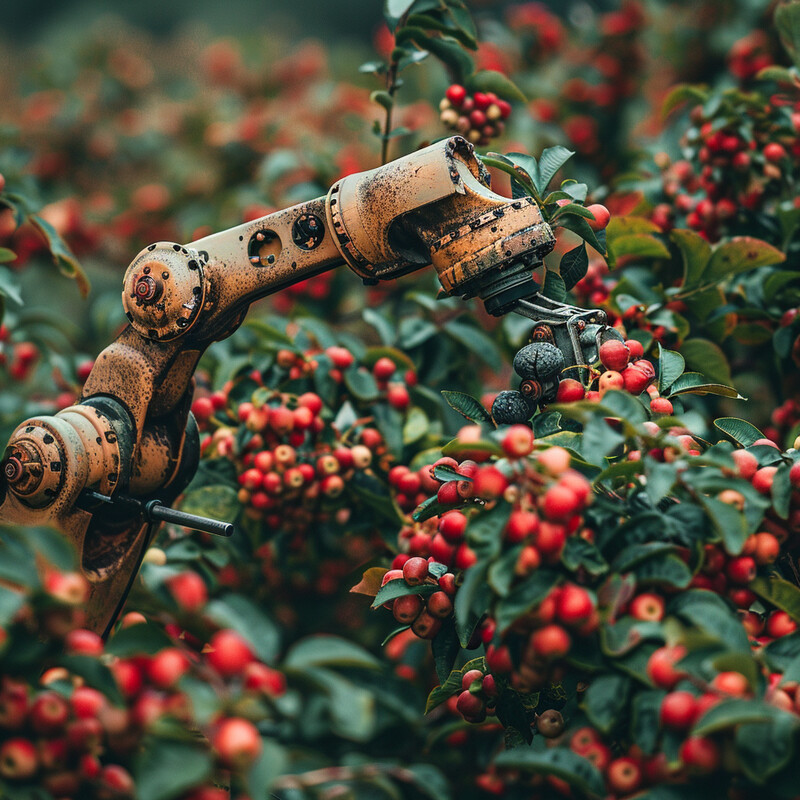
The economic impact of AI harvest robots is significant, especially in high-value crops. For instance, in citrus farming, it’s estimated that manual fruit picking accounts for up to 50% of the total annual labor cost in developed countries’ citrus operations. That means half of the growing cost is just paying people to pick fruit. AI-driven robots like the one unveiled by an Israeli company in 2023 aim to slash these costs. This autonomous citrus harvester uses multiple robotic arms equipped with computer vision, AI decision-making, and gentle vacuum grippers to pluck oranges from trees without damage. The system can operate 24/7 – it intelligently harvests during both day and night, which allows farmers to capture fruit at the peak time and speed up the harvest window. Field trials and partnerships (such as one with the California Citrus Research Board) are underway to deploy this technology in commercial groves, with the expectation of significantly reducing the need for seasonal labor crews. Early reports indicate these robots can pick a high percentage of the fruit crop autonomously and deliver it in good condition, all while logging data (e.g., fruit counts, sizes, locations) that can inform growers. As these robots scale up, growers could see substantial labor cost savings and fewer difficulties finding pickers, all while maintaining output – effectively increasing the profitability and sustainability of fruit production.
9. Data Integration and Management
Modern farms generate an overwhelming amount of data – from tractor GPS logs, to drone imagery, to soil sensor readings – and AI is playing a crucial role in integrating these disparate data streams into a coherent whole. Instead of leaving farmers to manually interpret dozens of separate readouts, AI-driven farm management platforms aggregate the data and use analytics to provide a “big picture” dashboard of farm operations. For example, an AI system can pull in weather forecasts, crop growth stage information, and real-time sensor data, then alert the farmer that Field A will need irrigation tomorrow or that Field B is at risk of pest attack based on a combination of factors. By breaking down data silos, AI integration tools allow farmers to see relationships (like how soil moisture and recent rain forecasts together affect fertilizer needs) that they might otherwise miss. This leads to better-informed decisions – the farmer gets actionable insights rather than raw data. Notably, the volume of farm data is huge and growing: by 2050, an average farm is expected to produce about 4.1 million data points per day. AI’s ability to rapidly process and analyze such “big data” means farmers can actually benefit from it, rather than being inundated. In practice, this might look like AI software analyzing tractor yield monitor maps, satellite images, and market price trends, then advising which crop variety to plant where next season for optimal profit. In short, AI acts as the farm’s data brain – merging information from equipment, sensors, and records into one intelligent management system that helps farmers make decisions that are timely, precise, and backed by data.
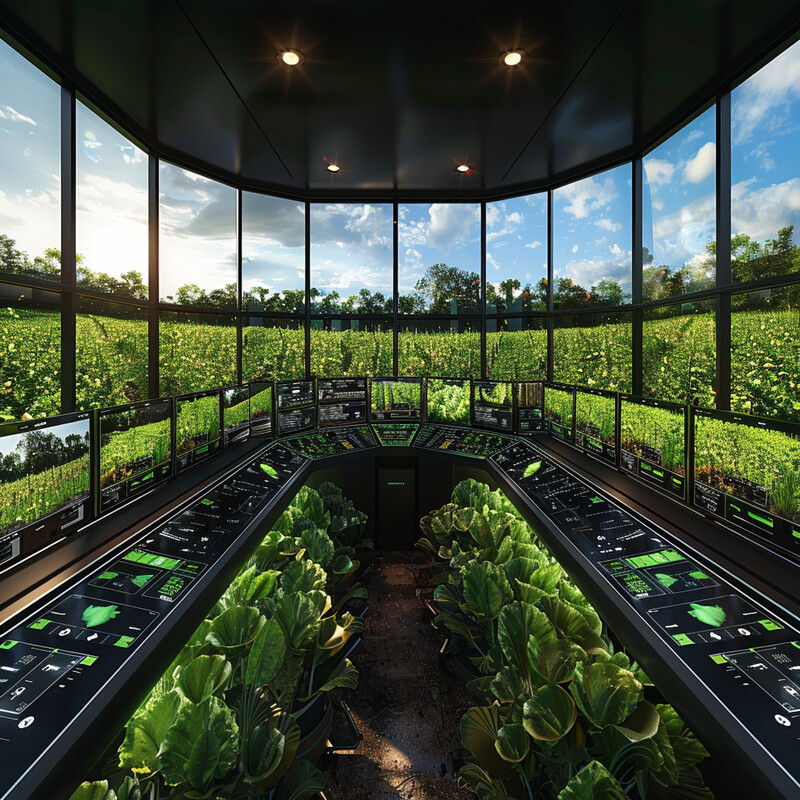
The trend toward data-driven farming underscores why integration is so important. A World Bank analysis noted that by mid-century, a single farm could be recording millions of data points daily from its operations – far beyond what any person could manually analyze. Already, a large corn farm today might collect detailed yield data per square meter, soil nutrient levels by zone, as well as weather data at 10-minute intervals. AI-based farm management systems, often termed “digital twins” of farms, have emerged to handle this complexity. These systems use AI to continuously reconcile data from different sources and even different manufacturers’ equipment, presenting a unified view to the farmer. For example, one commercial platform integrates tractor sensor data with satellite health indices and outputs simple graphics of crop status and predictions for each field. Industry experts explain that AI can “decode that vast amount of data to provide farmers with decision-making tools that ultimately increase productivity and efficiency”. Early adopters of such integrated AI platforms report improvements like catching problems more quickly and being able to coordinate planting, spraying, and harvesting operations more smoothly, since all data is in one place. As connectivity in rural areas improves and more farm devices get online, the role of AI in data integration is expected to become even more pivotal in farm management.
10. Sustainability Practices
AI is emerging as a powerful tool to help agriculture become more sustainable and climate-friendly. Many of the applications of AI in farming – precision input use, optimized irrigation, early pest detection, etc. – converge on the goal of producing more with less environmental impact. By using AI, farmers can sharply reduce their use of water, fertilizers, and pesticides, which means lower pollution runoff into rivers and less greenhouse gas emission from production of those inputs. For example, if AI reduces fertilizer needs, it also cuts the nitrous oxide emissions (a potent greenhouse gas) from agricultural soils. AI can also schedule farm operations in ways that reduce fuel consumption (fewer redundant tractor passes translate to less diesel burned and lower CO2 emissions). Given that agriculture is responsible for an estimated 21–37% of global greenhouse gas emissions and about 70% of freshwater, these efficiency gains are crucial for sustainability. Furthermore, AI can assist in implementing regenerative farming practices – it can analyze soil data to guide cover cropping or reduced tillage, which in turn builds soil carbon and biodiversity. The technology can even help measure and verify sustainability outcomes (for instance, AI is used to monitor deforestation or carbon sequestration on farms). In summary, AI provides the intelligence to make farming both productive and ecologically sound: farmers can maintain or increase yields while using fewer resources and mitigating environmental harms. This aligns agriculture with broader climate resilience and sustainability targets for the future.
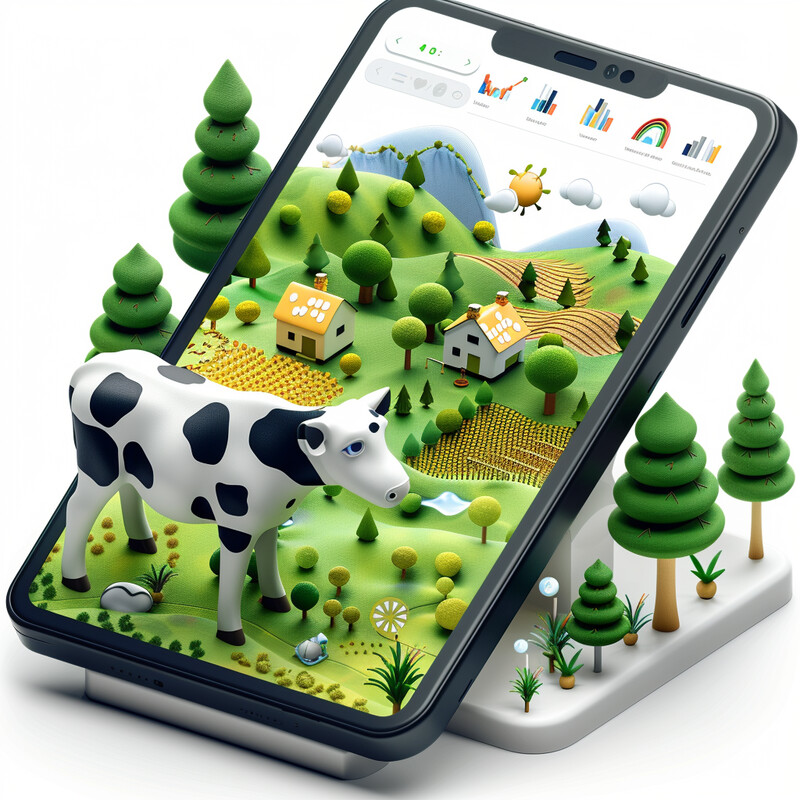
Quantitative results from AI-driven sustainable farming initiatives are very encouraging. In India, for example, an AI-powered advisory program for smallholder chili farmers (part of a World Economic Forum initiative) boosted crop yields by 21% while reducing pesticide use by 9%, in a single growing season. This dual benefit – more output with less chemical input – led to an income increase of about $800 per acre for those farmers, illustrating that sustainability and profitability can go hand in hand. In the United States, studies have shown that precision agriculture techniques (many powered by AI analytics) have already cut farm fuel use by about 6%, and full adoption could potentially cut fuel usage by an additional 16%. Since farm machinery fuel is a major source of emissions, this translates to a significant reduction in carbon footprint. Likewise, more efficient fertilizer application enabled by AI is reducing nitrous oxide emissions and preventing fertilizer runoff into waterways (a win for climate and local ecosystems). These examples highlight that AI isn’t just an abstract high-tech add-on – it directly contributes to sustainability metrics like lower chemical use, lower energy use, and greater carbon efficiency per crop. As more farms implement these AI-driven practices, the aggregate impact could be transformative in making agriculture gentler on the planet (World Economic Forum, 2024; Association of Equipment Manufacturers, 2021).